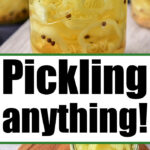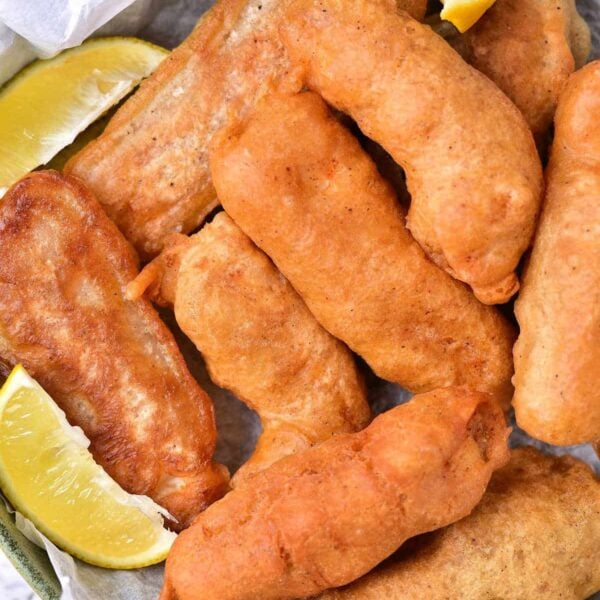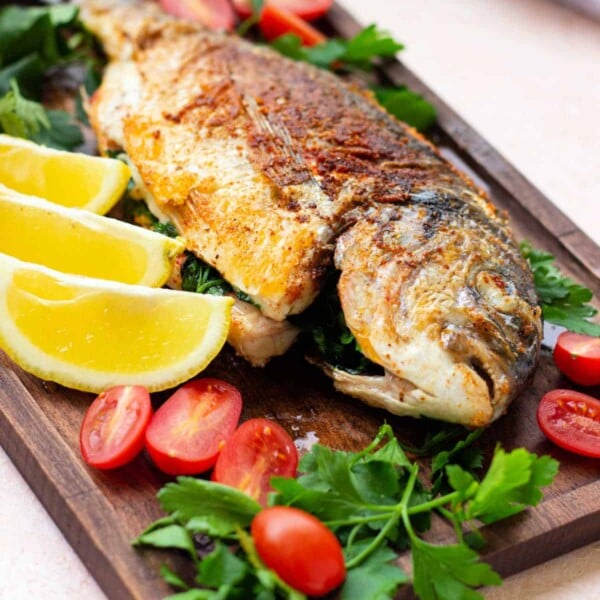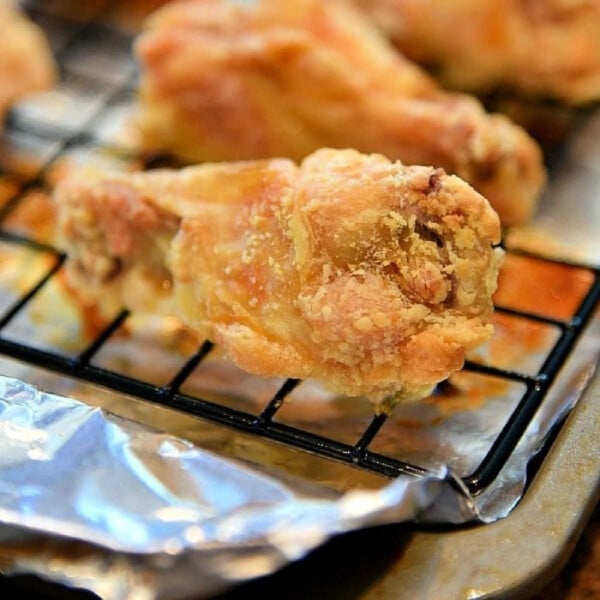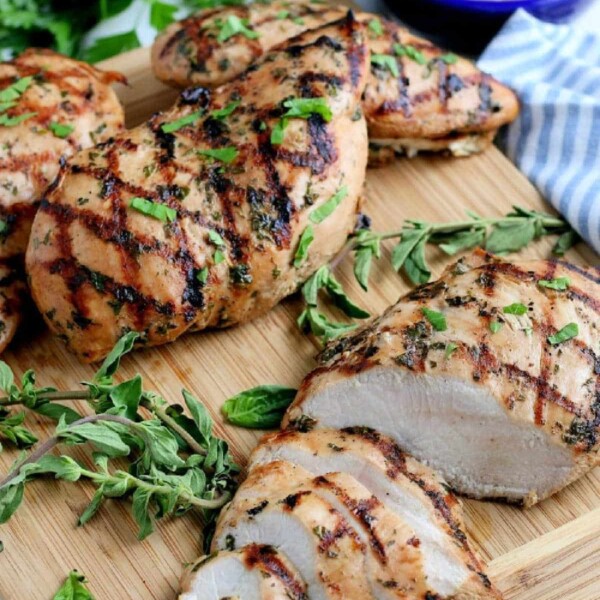How to make pickle banana peppers, boiled or no cook methods. What foods can you pickle and the best choices, then how to can after pickling foods.
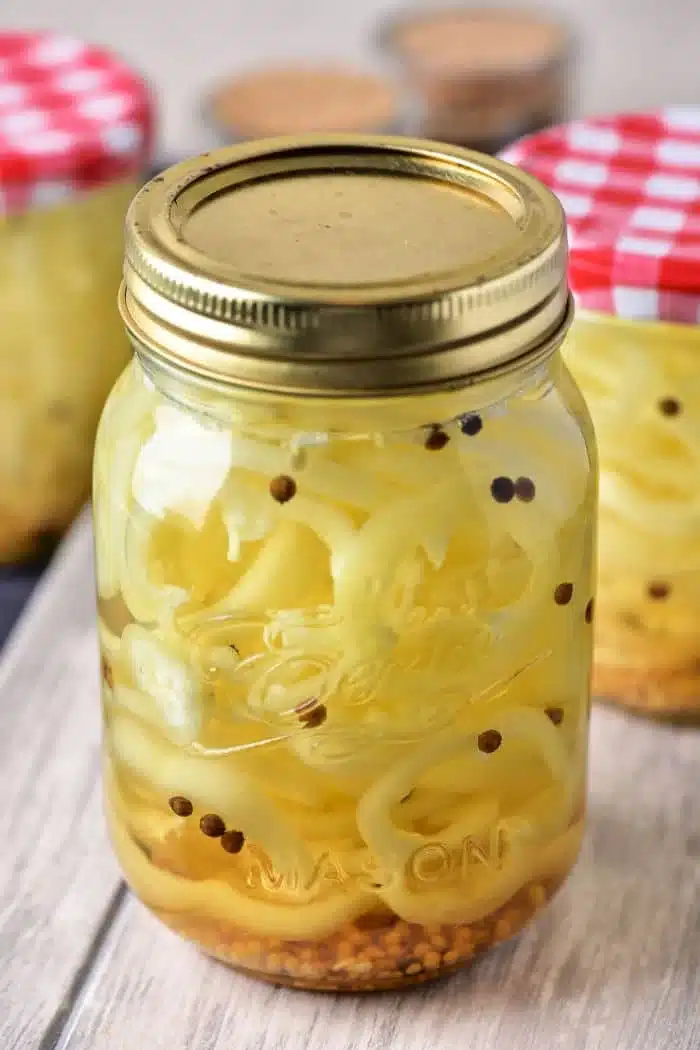
This process is quite easy. You can use all your favorite pieces of vegetables to do this too. You may find a new one you love like but banana peppers are our favorites. Try them all and see which is your favorite!
Pickled Vegetables Without Boiling
You can add the same ingredients and use cool water. Stir to incorporates the flavors but the granules won’t incorporate quite as well because you’d need heat for that. The biggest difference between the two methods is that no cook pickling keeps the veggies super crispy!
You can see, feel, and taste the difference though. Buy a jar of Vlasic on the shelf and Claussen in the refrigerated section. Bite in and you will see how the latter is super crunchy while the other bends. That is because using the no cook method isn’t boiled beforehand.
Boiled Method
Whether you make homemade dill pickles or the same liquid to pickle peppers decide what texture you want. When you boil everything the crystals will incorporate better making the flavor more intense, but softer. Take your pick. Directions are below for both, this one just requires heat.
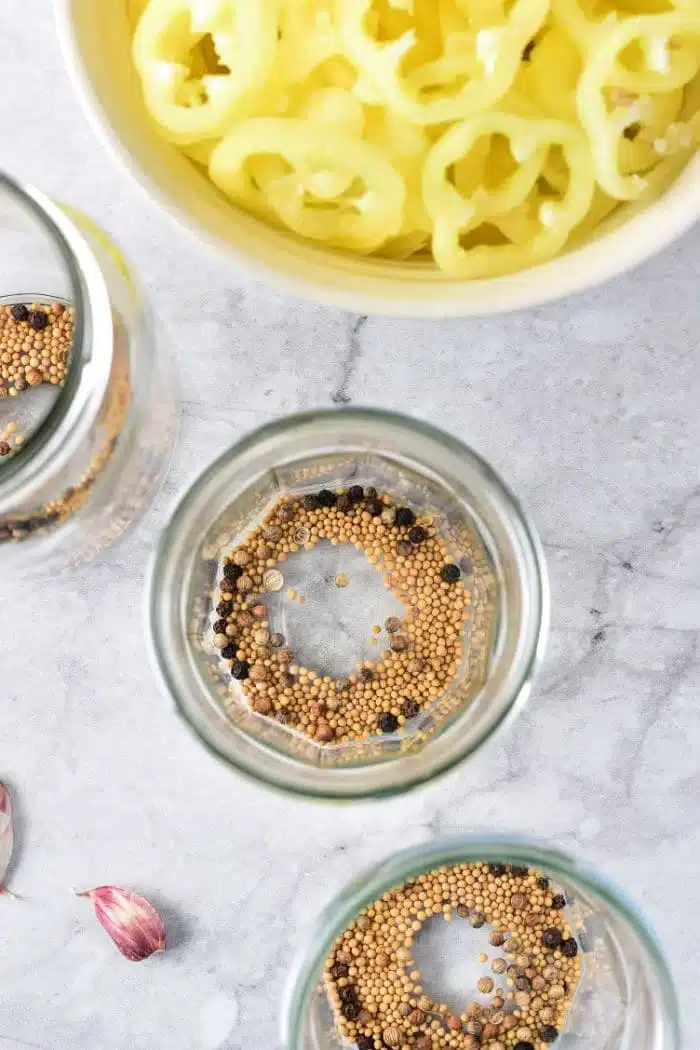
You can in fact buy a container of spices to pickle here if you wanted to. I suggest you make homemade pickle brine yourself though because then you can adjust things to your liking.
Ingredient Notes
You will want to slice banana peppers or other vegetables of your choice. You want them sliced into bite sizes as you’d like them to be preserved
Some white vinegar 5%, or apple cider vinegar is needed to start the pickling process and get that bit of sour taste to them and some water, cold is best.
Sea salt is better than table smaller grains because they have a stronger flavor and it is used not just for taste but to soften them as well.
White sugar will bring a bit of sweetness. I haven’t done this with a sugar free variety like from Splenda but imagine that would work too.
Whole cloves of garlic are added in there for taste but left in tact so it isn’t as pungent.
You also want to add some whole mustard seeds. Don’t worry it won’t taste like it would on top of a hot dog or anything.
Whole black pepper sometimes called peppercorns, same thing, keep them whole to add some of the taste but not as strong as if it were ground.
Coriander seeds may be something new to you but a great add in when pickling at home.
Mason jars are best for canning, or a container with a sealed lid if you’re just going to refrigerate
How to make spicy
If you wanted spicy pickled vegetables you should add red pepper flakes to your pickling liquid, that is your best bet. Start with 1/2 tsp. Once cooled and refrigerated overnight taste the brine and see if it is spicy enough for you. If not then next go around add another 1/4 tsp to 1/2.
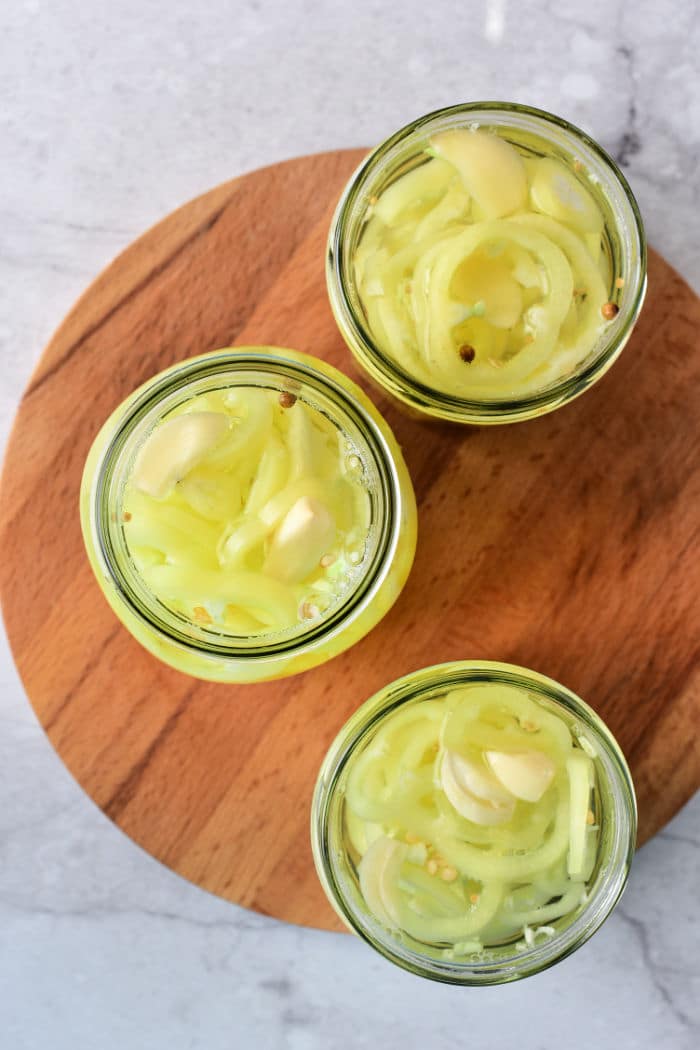
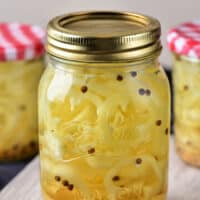
Pickled Banana Peppers Recipe
Equipment
- 3 mason jars
- 1 pan
Ingredients
- 1 pound banana peppers, sliced
- 1 cup white vinegar, 5%, or apple cider vinegar
- 1 cup water
- 1 tsp salt
- 3 tsp sugar
- 10-12 cloves garlic
- 3 tsp mustard seeds
- 2 tsp whole black pepper
- 2 tsp coriander seeds
Instructions
- Mix water, salt and sugar in a saucepan. Place over medium heat and stir until the salt and sugar dissolves. When the water boils, pour in the vinegar and after a minute turn off the heat.
- Sterilize canning jars in advance with boiling water or hot steam. If you don't plan on storing for a long time, you can skip this step. In this case, store in the refrigerator once jars are filled. Arrange mustard seeds, peppercorns and coriander seeds in jars.
- Fill jars with chopped vegetables or fruit pcs. Shake the jars to make pieces more compact. Don't fill the jars too tightly, typically just divide between 3 mason jars.
- Peel the garlic from the husk, cut it into slices and arrange in jars. Pour the very hot marinade in your pot into the jars equally. Leave about an inch of space on top of the jar, but no more. Food inside should be completely covered with marinade.
- Cover the jars with lids and tighten with rings (sterilize beforehand if you are canning. Directions to can are above). Leave on the table until contents in the jars cool completely.
- Can properly for longer storage, then keep in dark place. Or if eating within 1 week keep in fridge.
Notes
NO Boil Method
You would combine the same ingredients above. Put lid on jar tight and shake for a bit to dry to dilute some of the crystals. Add sliced banana peppers making sure they are submerged into the liquid. Seal shut the lid and store in the fridge for 48 hours and then enjoy.Nutrition
Nutrition information is automatically calculated, so should only be used as an approximation.
Other Vegetables to Pickle
Pickled beets are pretty darn popular to enjoy on top of a great salad. Carrots pickled are a great snack that even kids love, this is great to make spicy. Green beans are easy for the pickling process as all you have to do is cut off the ends. They will stay bright green and if you don’t boil the marinade they will stay crispy crunchy.
Radishes sliced really soaks the juices up well. You can make quick pickled cabbage that has been cut into large bite size pieces.
Or if you want the other color to make some pickled red cabbage some time. Thinly slice red onions and serve pickled onions on your burgers, refrigerator pickles are an obvious choice. And if you love heat you can try marinated jalapenos as well. You can adjust the heat with the amount of seeds left inside or taken out before adding it into the liquid. Add some sugar for somem sweetness too.
If you do have a DIY vegetable garden at home you might have something else that just grows like crazy. A great way to prevent waste is to soak in pickling spice and store them this way.
How long does it take to pickle banana peppers?
To make quick pickled vegetables you need about half an hour or so to get this done. Mix water, salt and sugar in a saucepan. Place over medium heat and stir until the salt and sugar dissolves. When the water boils, pour in the vinegar and after a minute turn off the heat.
Cover the jars with lids and tighten with rings (sterilize beforehand if you are canning. Directions to can are above). Leave on the table until contents in the jars cool completely. Can properly for longer storage, then keep in dark place. Or if eating within 1 week keep in fridge

How long does pickled vegetables last?
When kept in the refrigerator, unopened jars of pickled fruit can last for several months, typically up to 6 months. If properly canned using a water bath or pressure canning method, it can be stored at room temperature in a cool, dark place for up to 1 year. Ensure that the lids are sealed correctly and that there are no signs of spoilage.
